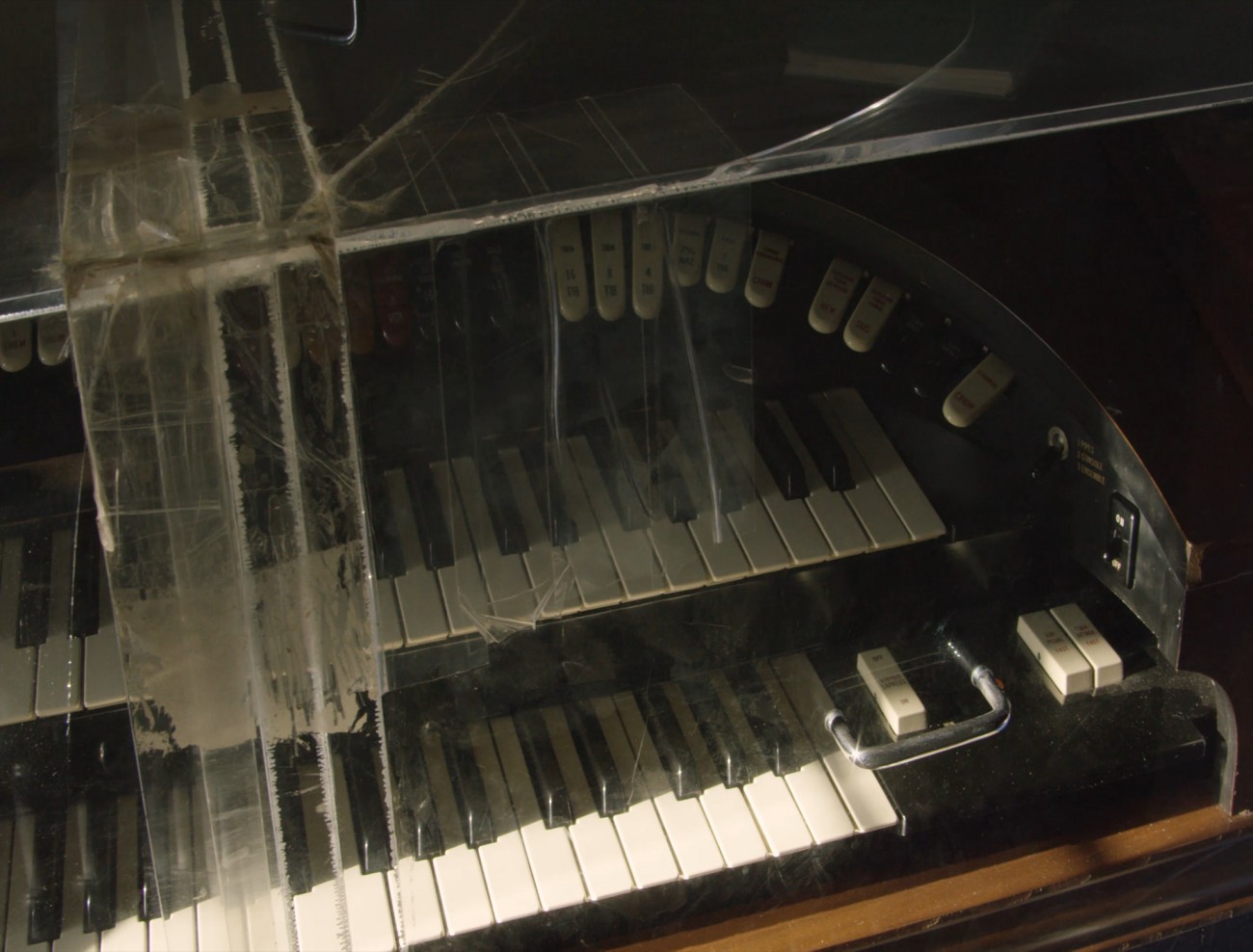
Pilgrim, 2017
Single-channel video (color, sound); 7 minutes, 41 seconds
Courtesy of the artist, Corbett vs. Dempsey, Chicago, and Kate Werble Gallery, New York
Pilgrim interweaves Smith’s footage of musician Alice Coltrane’s ashram in Agoura, California; the Watervliet Shaker village of Troy, New York; and Watts Towers, against a soundtrack of Coltrane’s “One for the Father” (1978). In the early 1970s, Coltrane experienced both astral projection and spiritual visitations. These incidents led her to adopt the Sanskrit name Turiyasangitananda, and in 1975 to found the Sai Anantam Ashram where she elected to live a life of structured spiritual practice while continuing to create music that was unrestricted by form or societal expectations. Coltrane’s memoir Monument Eternal describes her spiritual initiation and revelations. Smith was struck by the similarity of Coltrane’s visions to mysterious machines labeled “Heavenly Musical Instruments” in nineteenth-century Shaker “gift drawings,” which were made by young female members of the sect who recorded their ecstatic visions despite a general prohibition against visual culture in Shaker society. The gift drawings were part of an “Era of Manifestations” that revivified the sect, known for its egalitarian philosophy and communal living practices, at a time when its membership was in decline. Smith sees this phenomenon as an example of turning to visionary aesthetic expression in times of crisis.

